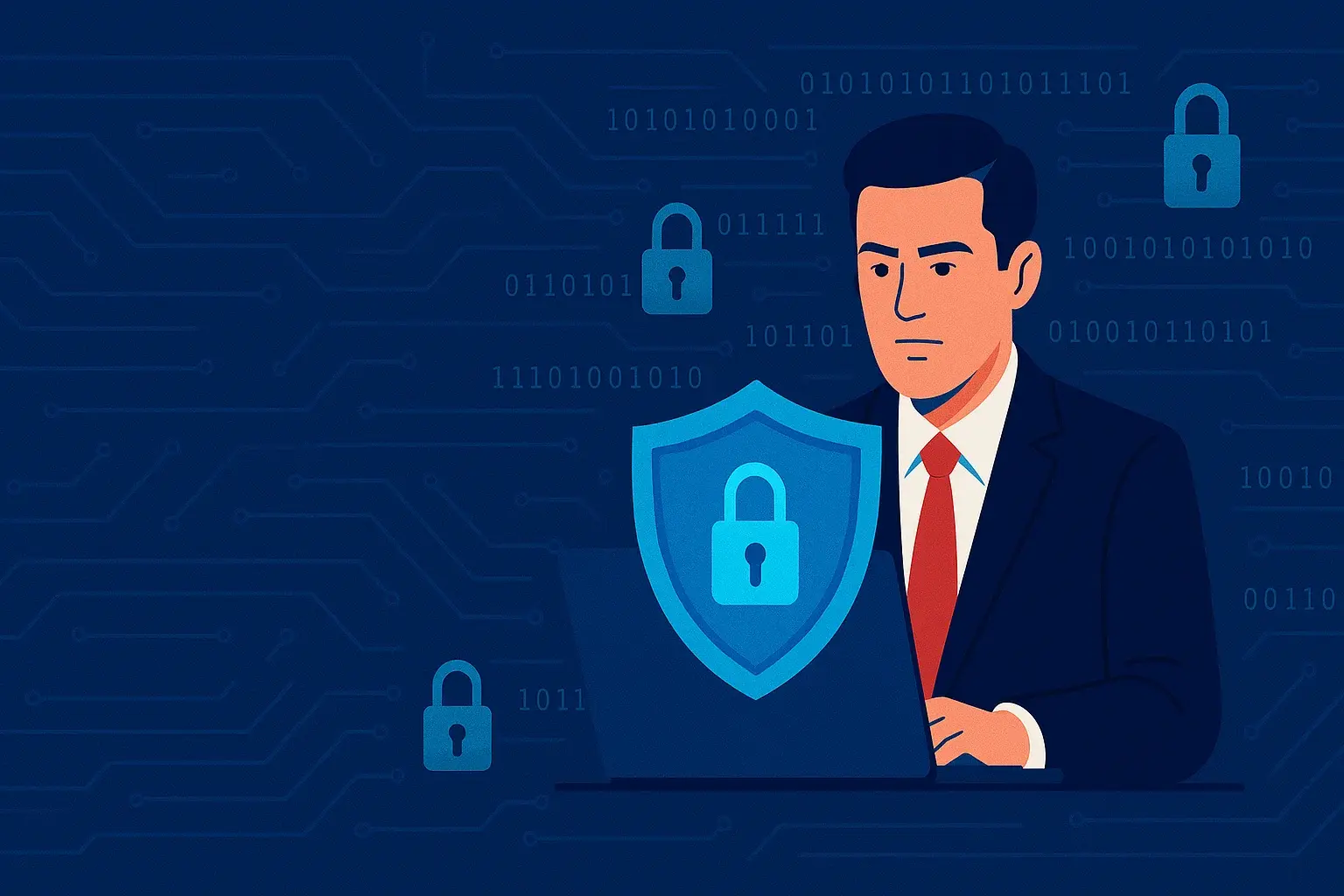Only 15% of companies measure the financial impact of cyber risks with advanced tools. What does this mean? That most of them make blind decisions, without concrete data, and end up seeing cybersecurity as just another expense, instead of what it really is: a strategic investment to protect and grow the business.
Meanwhile, cyberattacks are no longer a problem exclusive to large technology companies. Today, any company (regardless of its size or industry) can be targeted. And what is worrying is not only the frequency with which they occur, but also the fact that many organizations remain unprepared. Most critically, the key decisions to anticipate or react to these risks are often in the hands of senior management... and that is where someone critical is often missing.
Cybersecurity is not just IT: leadership also decides
Cybersecurity can no longer be just a technology issue. Today it is a strategic issue that should be on the decision-making table of any business leader. Despite increasing threats and ever more stringent regulations, many companies still do not fully integrate digital risk management into their most important decisions.
One statistic speaks volumes: less than half of chief information security officers are actually involved in strategic planning for cybersecurity investments. That disconnect leaves many companies more exposed than they realize, both operationally and reputationally.
And while 77% of executives say they expect to increase their cybersecurity budget next year, the real issue is not how much is spent, but how that spending is managed. Lack of communication and alignment between senior management and security teams remains a huge barrier. In many cases, the CEO and CISO don't even share the same trust when it comes to complying with regulations or responding to an attack. That shows that there is still a significant gap in how digital risk is understood and managed.
From expense to competitive advantage: How to rethink cybersecurity?
Only 2% of companies have managed to implement cyber resilience actions in all areas. Yes, you read that right: barely a handful are actually prepared in the face of an attack. In a world where digital transformation is accelerating and threats are evolving all the time, this level of preparation is clearly insufficient.
And as if that weren't enough, only 15% of companies use advanced tools to measure the financial impact of cyber risks. As a result, decisions are often made without hard data, and investment in security is seen more as a nuisance expense than a strategy to protect (and grow) the business.
Faced with this, business leaders need to change their approach. First things first: integrate the CISO into the overall business strategy, putting him or her to work side-by-side with the CEO, CFO and CIO. Cybersecurity can no longer be a stand-alone issue; it has to be at the heart of planning.
The second thing: it's time to start quantifying risk. Without clear data on the impact an attack can have (on money, reputation and operations), companies will continue to react late, rather than anticipate problems.
And finally, cybersecurity should no longer be seen only as a defense mechanism. More than 57% of executives already admit that customer trust depends directly on how digitally secure a company is. In other words, whoever manages to guarantee data integrity and privacy will have a clear competitive advantage.
Yes, the scenario is complex. But it is also a great opportunity for companies with vision to get ahead of the rest. Digital resilience can no longer be a distant goal: it has to be part of everyday life. And that will only happen when leaders stop seeing security as a technical issue and start treating it as a key priority for business sustainability.
Read more: The Pace of Cyberattacks: 1 Every 14 Seconds, a New Record
Future trends and challenges CEOs should keep an eye on
- Artificial intelligence and advanced threats: Cybercriminals are already using artificial intelligence to create more sophisticated, automated and personalized attacks. CEOs should invest in tools that also use AI to defend against, anticipate and neutralize threats in real time.
- Digital supply chain: Third-party attacks are becoming increasingly common. One vulnerable supplier can open the door to the entire business ecosystem. Assessing and monitoring partner and supplier security is now a critical part of risk strategy.
- ESG and cybersecurity: More and more investors are including cybersecurity as part of ESG (environmental, social and governance) criteria. A CEO committed to responsible corporate governance cannot neglect digital security.
Conclusion: Security starts at the top
Today, there is no digital transformation without protection. Cybersecurity is no longer just a matter of technology: it is key to keep the business running, to protect the brand's reputation and, above all, to maintain the trust of those who choose us.
That's why CEOs can't sit on the sidelines. They need to take the lead, lead with clarity and make digital security part of the everyday strategy. Invest judiciously, accompany their teams and lead by example. Because at the end of the day, protecting the company is also protecting its future.

